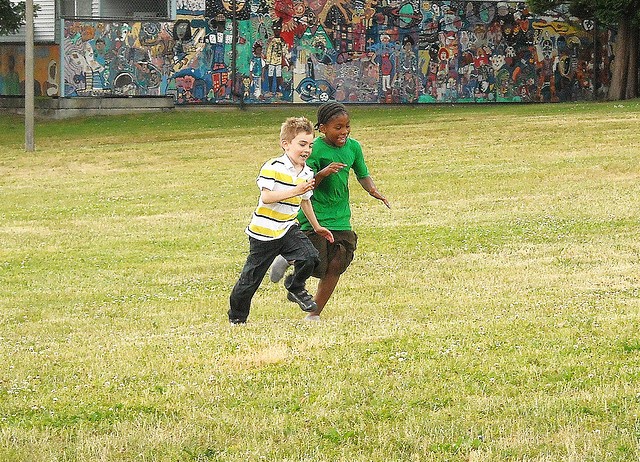(This is part three of a series that examines ADHD in the digital world, in honor of CHADD’s Annual International Conference on ADHD, at which my colleague, Dr. Gary Stoner and I will be guest presenters)
If you have a child who has been diagnosed with ADHD you might have noticed that she or he is at their best and most focused when involved in a “risky” activity or sitting in front of a screen. There’s a reason for this. In a recent article, Dr. Richard Friedman describes ADHD as a problem of boredom. He cites neuroscience research that demonstrates that people with ADHD “are actually hard-wired for novelty seeking,” and posits that this trait may have been highly useful to our ancestors who were hunters and seekers, needing to scout the environment for food and to be alert to ensure their safety. However, in today’s world, it is far more useful for school-age children to be able to sit at a desk and remain focused on the material presented by a teacher than to let their focus leap at any distraction.
Friedman goes on to say that one of the best interventions for children with ADHD is to provide them with activities that are stimulating to the under-responsive reward centers in their brains. Unfortunately, teachers cannot make every assignment compelling and parents cannot make chores irresistible or visiting at grandma’s into a trip to Disneyland. But there are a few strategies that can help children with ADHD be more engaged and less bored by their daily activities.
As a practicing child clinical psychologist, I frequently have opportunities to talk to parents about how to help children affected by ADHD. My mantra is, “place your child with ADHD into activities that light up his brain.” My point being that ADHD is far less of a problem when a child is doing something that interests them. As the child grows up and moves forward in life, it is even more imperative that they are able to identify interests so that when they go to college or pursue a career, they are doing something that stimulates the reward centers of the brain.
I tell parents of younger kids to find interests that help them to practice sustained attention where they are cognitively, physically, and socially engaged in the activity. Because some of these strategies can be alarming to parents, I often need to explain my rationale for them. Here are some of my suggestions:
- Encourage dangerous and risk-taking activities.
Many kids with ADHD become very focused and stimulated when they are engaged in activities with a hint of danger, like skateboarding, snowboarding, surfing, rock climbing, and BMX bike riding. These activities turn on the reward centers in the brain and help them to recognize what it feels like to be fully engaged and attentive.
- Let her play games.
While my basic approach to the digital world is to encourage families to pursue a healthy and balanced Play Diet, children with ADHD can engage their brains with video games and other technology in a very productive manner. It becomes important for parents to guide and regulate game play and to help children translate game-based skills into real world skills. Our entire approach at LearningWorks for Kids is designed to help parents with this task.
- Push your kids into new activities.
Don’t be afraid to get them to try something new that you believe may fully engage their attention. If your kid likes to be outdoors then go on hikes, bring them to an archeological dig, or start a vegetable garden. These activities may help her or him develop an interest that could turn into a career path.
- Make him move and then make him move some more.
There is excellent research that suggests that vigorous physical activity improves focus and attention span. If your child is not a runner or soccer, basketball, hockey, or lacrosse player, get him involved in an activity that requires complex body movements. Further research suggests that activities such as yoga and martial arts can improve focus and executive functions in children with ADHD.
It is always best for a child with ADHD when parents can follow all of these strategies as they all affect the brain in a different manner and also help them practice attention skills in a variety of environments. So remember, help your child find activities that engage his brain and sustains his focus. To learn how to make the games and apps your child already uses build their executive functions, check out our playbooks.




